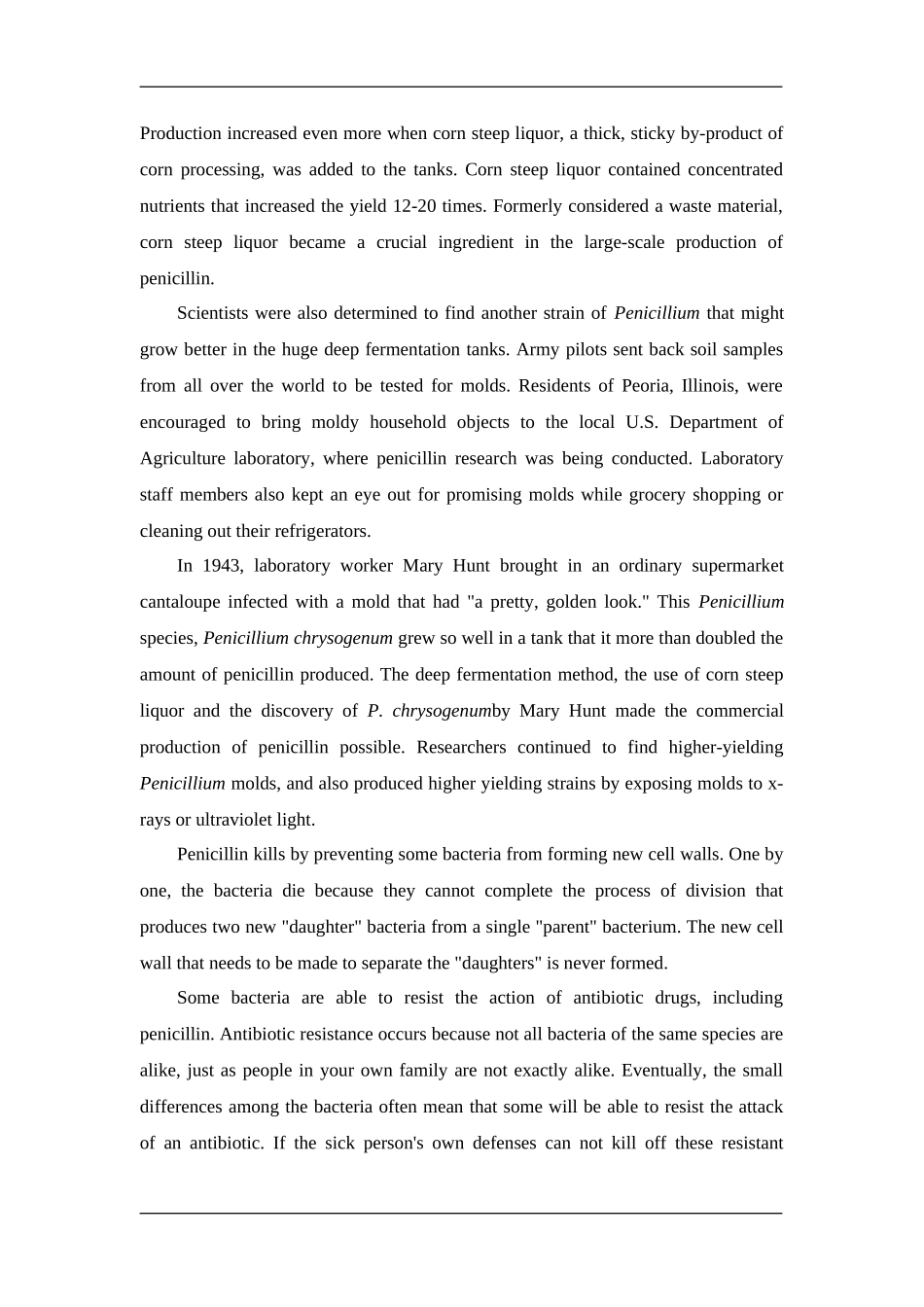Penicillin: the first miracle drugMany of you are here only because penicillin saved your life, or the life of one of your parents or grandparents. Penicillin's ability to cure people of many once-fatal bacterial infections has saved so many lives that it is easy to understand why it was once called a "miracle drug". Antibiotics are chemicals, effective at very low concentrations, created as part of the life process of one organism, which can kill or stop the growth of a disease-causing microbe--a germ. In 1929, Alexander Fleming, a doctor and researcher at St. Mary's Hospital in London, England, published a paper on a chemical he called "penicillin", which he had isolated from from a mold, Penicillium notatum. Penicillin, Fleming wrote, had prevented the growth of a neighboring colony of germs in the same petri dish. Dr. Fleming was never able to purify his samples of penicillin, but he became the first person to publish the news of its germ-killing power. Howard Florey, Ernst Chain and Norman Heatley expanded on Fleming's work in 1938, at Oxford University. They and their staff developed methods for growing, extracting and purifying enough penicillin to prove its value as a drug.World War II (1939-1945) had begun by the time their research was showing results. The main research and production was moved to the United States in 1941, to protect it from the bombs pounding England. Work began on how to grow the mold efficiently to make penicillin in the large quantities that would be needed for thousands of soldiers. As the destruction of the war grew, so did interest in penicillin in laboratories, universities and drug companies on both sides of the Atlantic. The scientists knew they we...


